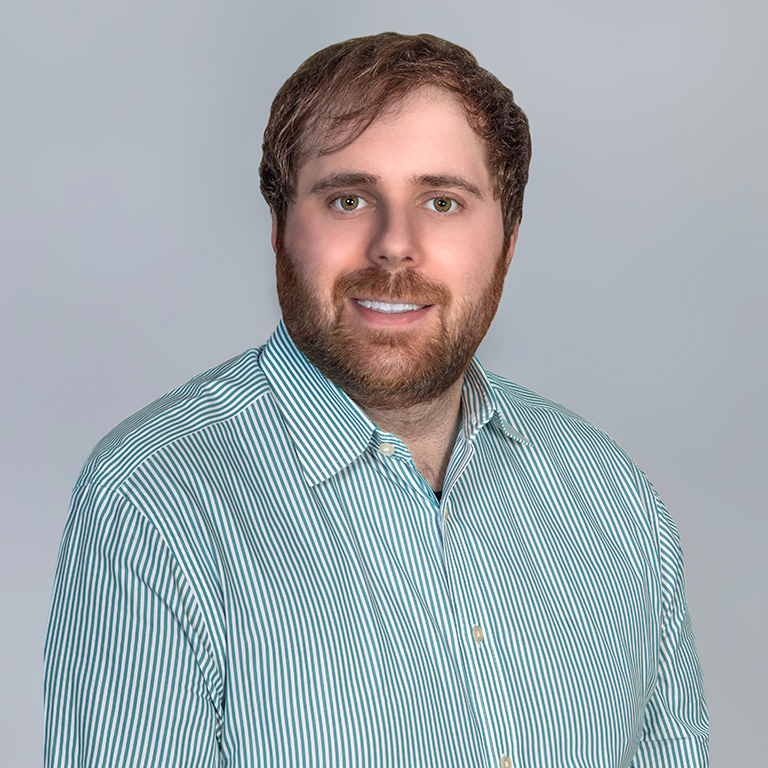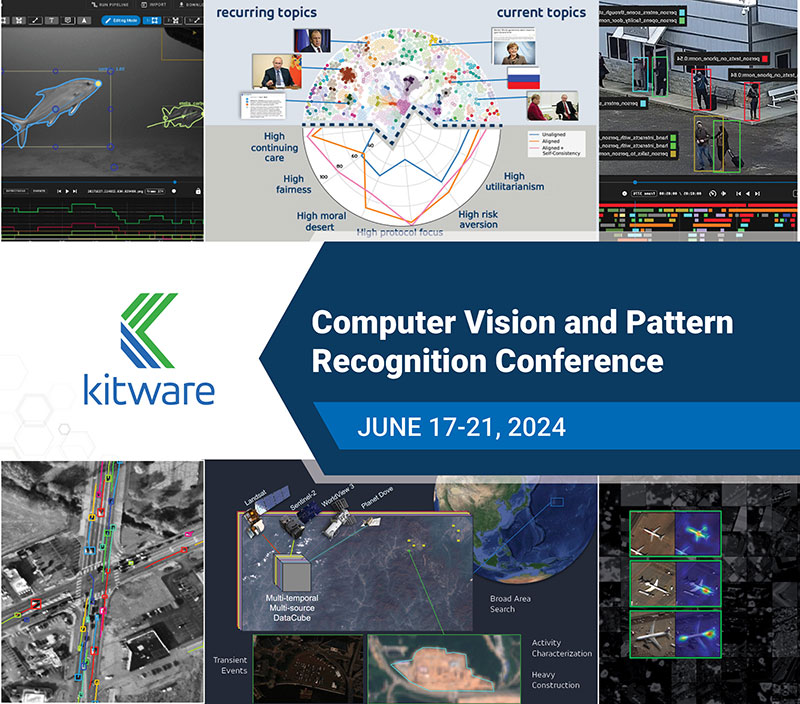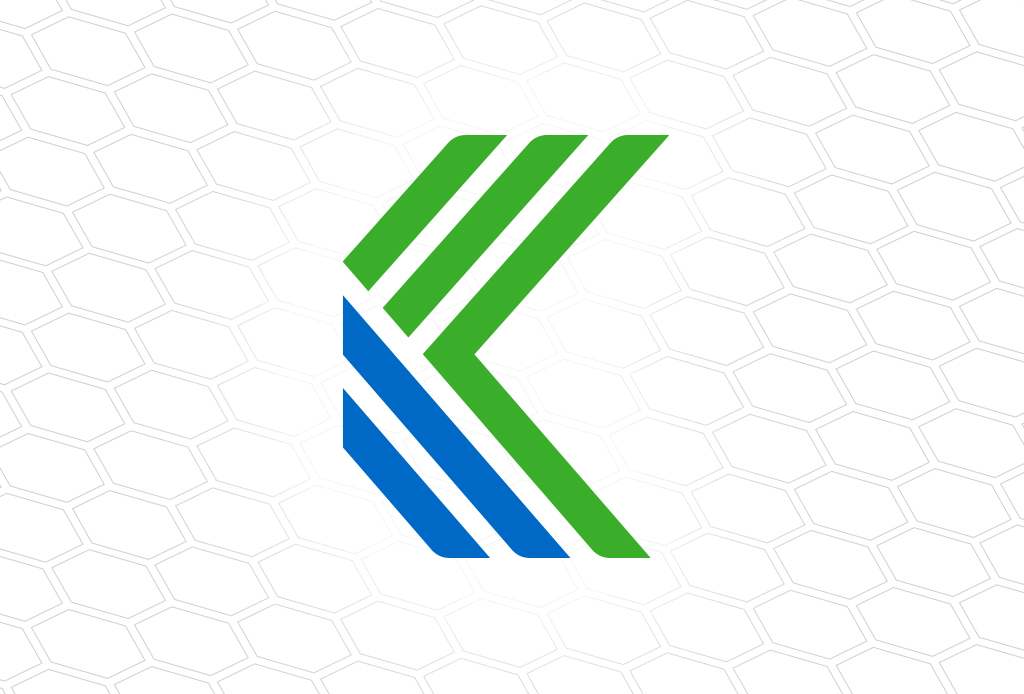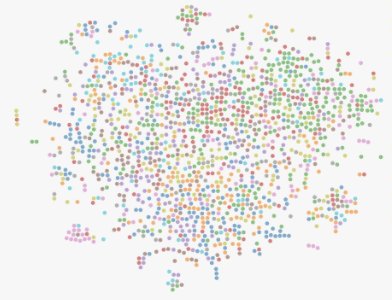Meet the Team
Christopher Funk, Ph.D.
Staff R&D Engineer
Kitware DC
Arlington, VA
Ph.D. in Computer Science and Engineering
Pennsylvania State University
M.S. in Computer Science
Pace University
B.S. in Government
Franklin & Marshall College
Christopher Funk, Ph.D., is an R&D engineer on Kitware’s Computer Vision Team located in Arlington, Virginia. He has experience working in multiple modalities, including image, video, remote sensing, motion capture, foot pressure, and medical data (e.g. electroencephalogram, or EEG).
Chris is primarily involved in computer vision/machine learning projects. He leads the two Defense Advanced Research Projects Agency (DARPA) projects, Learning with Less Labels and SAIL-ON Novelty Detection. For the Learning with Less Labels project, he led the creation of a unified framework for image classification, object recognition, and machine translation that integrates with the program’s test and evaluation. The framework has been generalized to multiple projects, now called Tinker, with a focus on simplifying researchers’ integration, ease of running multiple experiments, and moving to production. It has also become the primary framework for SAIL-ON.
Chris is also actively involved in writing proposals, including the successful DARPA SAFE-SiM proposal worth $1.2M in Phase 1 and the National Institutes of Health (NIH) Medical Image Quality Assessment (MIQA) proposal worth $1.6M.
In 2017, Chris helped run the Conference on Computer Vision and Pattern Recognition (CVPR). In the same year, he also helped run the symmetry competition workshop at the International Conference on Computer Vision (ICCV). His work has been published in CVPR and ICCV proceedings. More recently, he also created the official visualization for finding papers at CVPR 2020 and 2021.
While working on his Ph.D., Chris was a teaching assistant for computer vision, pattern recognition and machine learning, computer graphics, and computational symmetry courses. He also worked with machine learning tasks, such as developing the first deep learning-based reflection and rotation symmetry detection approaches. These approaches mimicked human symmetry perception in a real-world, unconstrained setting. He also developed the symmetry dataset by creating an Amazon Mechanical Turk using Django from scratch.
During this time, Chris also analyzed EEG data to understand how the human brain processes symmetry groups. He discovered a connection between human perception and the mathematical perception of symmetry groups. He also developed the first foot pressure estimation algorithm that uses an image to predict a human’s balance. Chris also gained experience working with many texture detection, transfer, and synthesis approaches using classical methods and generative adversarial networks (GANs).
In 2018, Chris received his Ph.D. in computer science from Penn State University. His thesis focused on detecting symmetry in images and how symmetry is detected within the human brain. He received his master’s degree in computer science from Pace University in 2013. During his studies, he took a cognitive approach to computer vision and worked with architectures such as Soar and physics engines like PhysX to learn to predict future object positions. Chris received his bachelor’s degree in government from Franklin & Marshall College in 2010.
Awards
Best Research Project, Pace University Computer Science Research Day, 2013
Best Graduate Student, Pace University Computer Science Department, 2013
Invited Talks & Media
“WEFT Feature Detection and Mensuration for Airplane Classification in Satellite Imagery,” oral presentation, MSS National Symposium on Sensor and Data Fusion, 2019
“Beyond Planar Symmetry,” oral presentation for ICCV, 2017
“Symmetry Competition Workshop: Evaluation and Results,” oral presentation, ICCV Workshops, 2017
“4D Model-Based Spatiotemporal Alignment of Scripted Taiji Quan Sequences,” poster presentation, ICCV Workshops, 2017
“Symmetry reCAPTCHA,” poster presentation, CVPR, 2016
“Symmetry reCAPTCHA,” poster presentation, CVPR, 2016
Professional Associations & Service
Member, IEEE Computer Society, 2013-present
Member, Computer Vision Foundation (CVF), 2016-present
Program committee member, Computer Vision and Pattern Recognition (CVPR)
Program committee member, European Conference on Computer Vision (ECCV)
Program committee member, International Conference on Computer Vision (ICCV)
Program committee member, IEEE Winter Conference on Applications of Computer Vision (WACV)
Program committee member, British Machine Vision Conference (BMVC)
Program committee member, Asian Conference on Computer Vision (ACCV)
Program committee member, Association for the Advancement of Artificial Intelligence (AAAI)
Publications
- A. Hoogs, A. Lynch, S. Brockman, C. Funk, B. Ravichandran, and M. Dawkins, "Creating Deep Learning Detectors in VIAME for Rare Objects in Marine Imagery," in 2024 Ocean Sciences Meeting Poster, 2024. [URL]
- B. Hu, B. Ray, A. Leung, A. Summerville, D. Joy, C. Funk, and A. Basharat, "Language Models are Alignable Decision-Makers: Dataset and Application to the Medical Triage Domain," in Proceedings of the 2024 Conference of the North American Chapter of the Association for Computational Linguistics: Human Language Technologies (Volume 6: Industry Track), 2024. [URL]
- C. Funk, D. Depauw, K. Fieldhouse, and E. Blasch, "Fog-Assisted Autoencoder for Enhanced Multi-INT Targeting," in Proceedings of the National Security Sensor and Data Fusion Committee (NSSDF), 2023.
- C. Funk, B. Clipp, and A. Hoogs, "Scale-MAE: A Scale-Aware Masked Autoencoder for Multiscale Geospatial Representation Learning.," in Proceedings of the National Security Sensor and Data Fusion Committee (NSSDF), 2023.
- S. Montgomery, F. Li, C. Funk, E. Peethumangsin, M. Morris, J. Anderson, A. Hersh, and S. Aylward, "Detection of pneumothorax on ultrasound using artificial intelligence," Journal of Trauma and Acute Care Surgery, vol. 94, no. 3, pp. 379-384, Mar. 2023. [URL]
- C. Funk and Y. Liu, "EscherNet 101," arXiv:2303.04208, Mar. 2023. [URL]
- C. Zhao, D. Du, A. Hoogs, and C. Funk, "Open Set Action Recognition via Multi-Label Evidential Learning," in 2023 IEEE/CVF Conference on Computer Vision and Pattern Recognition (CVPR), 2023. [URL]
- D. Du, C. Funk, K. Doctor, and A. Hoogs, "Novel Object Detection in Remote Sensing Imagery," in IGARSS 2023 - 2023 IEEE International Geoscience and Remote Sensing Symposium, 2023. [URL]
- D. Du, A. Shringi, A. Hoogs, and C. Funk, "Reconstructing Humpty Dumpty: Multi-feature Graph Autoencoder for Open Set Action Recognition," in 2023 IEEE/CVF Winter Conference on Applications of Computer Vision (WACV), 2023. [URL]
- S. Aylward, B. Ravichandran, C. Funk, B. Moore, F. Li, J. Crall, M. Morris, J. Anderson, A. Hersh, Y. Bronshteyn, and S. Montgomery, "ARGUS: An Open-Source Platform for Ultrasound Video AI That Supports Multiple Point-of-Care Applications," in MHSRS 2023, 2023. [URL]
- D. Davila, D. Du, B. Lewis, C. Funk, J. Van Pelt, R. Collins, K. Corona, M. Brown, S. McCloskey, A. Hoogs, and B. Clipp, "MEVID: Multi-view Extended Videos with Identities for Video Person Re-Identification," in IEEE/CVF Winter Conference on Applications of Computer Vision (WACV), 2023. [URL]
- C. Reed, R. Gupta, S. Li, S. Brockman, C. Funk, B. Clipp, K. Keutzer, S. Candido, M. Uyttendaele, and T. Darrell, "Scale-MAE: A Scale-Aware Masked Autoencoder for Multiscale Geospatial Representation Learning," in International Conference on Computer Vision 2023, 2023. [URL]
- D. Du, C. Funk, and A. Hoogs, "Novelty Detection in Remote Sensing Imagery," in IGARSS 2022 - 2022 IEEE International Geoscience and Remote Sensing Symposium, 2022. [URL]
- D. Prijatelj, S. Grieggs, J. Huang, D. Du, A. Shringi, C. Funk, A. Kaufman, E. Robertson, and W. Scheirer, "Human Activity Recognition in an Open World," arXiv:2212.12141, Dec. 2022. [URL]
- C. Zhao, F. Chen, X. Wu, C. Funk, and A. Hoogs, "1st ACM SIGKDD Workshop on Ethical Artificial Intelligence: Methods and Applications (EAI-KDD22)," in Proceedings of the 28th ACM SIGKDD Conference on Knowledge Discovery and Data Mining, 2022. [URL]
- R. Yu, D. Du, R. LaLonde, D. Davila, C. Funk, A. Hoogs, and B. Clipp, "Cascade Transformers for End-to-End Person Search," in Proceedings of the IEEE/CVF Conference on Computer Vision and Pattern Recognition, 2022. [URL]
- J. Scott, B. Ravichandran, C. Funk, R. Collins, and Y. Liu, "From Image to Stability: Learning Dynamics from Human Pose," in European Conference on Computer Vision 2020, 2020.
- C. Funk, J. Crall, W. Hicks, C. Law, P. Tunison, R. Blue, A. Hoogs, T. Rovito, and A. Maltenfort, "WEFT Feature Detection and Mensuration for Airplane Classification in Satellite Imagery," in MSS National Symposium on Sensor and Data Fusion, 2019.
- C. Funk, S. Nagendra, J. Scott, B. Ravichandran, J. Challis, R. Collins, and Y. Liu, "Learning Dynamics from Kinematics: Estimating 2D Foot Pressure Maps from Video Frames," arXiv preprint arXiv:1811.12607, Nov. 2018. [URL]
- C. Funk, S. Lee, M. Oswald, S. Tsogkas, W. Shen, A. Cohen, S. Dickinson, and Y. Liu, "2017 ICCV Challenge: Detecting Symmetry in the Wild," in 2017 IEEE International Conference on Computer Vision Workshops (ICCVW), 2017. [URL]
- J. Scott, R. Collins, C. Funk, and Y. Liu, "4D Model-Based Spatiotemporal Alignment of Scripted Taiji Quan Sequences," in 2017 IEEE International Conference on Computer Vision Workshops (ICCVW), 2017. [URL]
- C. Funk and Y. Liu, "Beyond Planar Symmetry: Modeling Human Perception of Reflection and Rotation Symmetries in the Wild," in Proceedings of the IEEE International Conference on Computer Vision, 2017. [URL]
- C. Funk and Y. Liu, "LabelMeSymmetry: a tool for human symmetry perception," Journal of Vision, vol. 16, no. 12, pp. 306, Sep. 2016. [URL]
- C. Funk and Y. Liu, "Symmetry reCAPTCHA," in Proceedings of the IEEE Conference on Computer Vision and Pattern Recognition, 2016. [URL]



